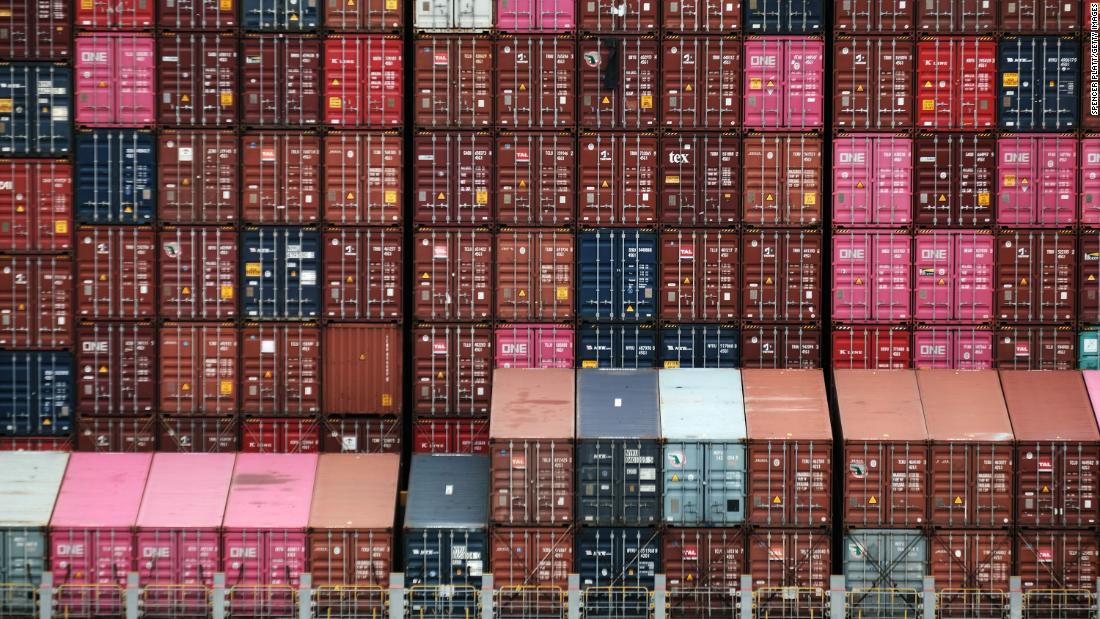- Get link
- X
- Other Apps
Business group warns of mass layoffs and 'catastrophic' supply chain disruptions from Biden's vaccine mandate
- Get link
- X
- Other Apps
Virtually every US home contains items that came through the ports of Los Angeles or Long Beach.
The neighboring ports, a mere two nautical miles from each other, are the two largest in the country, measured by containters handled — with Los Angeles holding the top spot.
Imports from Asia that you find in your home — including clothes, shoes, furniture, toys and everyday household goods such as kitchenware, cleaning supplies and food — flood in through the ports. They arrive in 20-foot long, or more commonly 40-foot long, steel shipping containers.
Many of the containers hold the parts and raw materials that US factories need to build their products domestically, including automobiles, aircraft and appliances. There is no such thing as a completely American-built car, for example, and Asia is a major source of many of those imported parts.
After the containers are unloaded, they are hauled away by truck or rail cars to warehouses and distribution centers, factories and stores.
Before the congestion problems started in mid-2020, ships arrived off the coast of the two southern California ports and went straight to berths to offload their containers and get new ones loaded back in their place.
Not anymore.
As of Tuesday morning there were 62 container ships anchored off the coast of southern California — 37 of them destined for the Port of LA and the other 25 destined for Long Beach. The 62 ships contain the equivalent of about 200,000 20-foot containers. Overall there were a record 100 cargo vessels — including barges, tankers, car carriers and ships that carry bulk goods — anchored just outside the ports as of Monday.
The average waiting time for ships to dock at port is about 10 days. And once they are unloaded, many of the containers will sit at the port for a week or more before anyone shows up to take them on the next leg of their journey.
"It's like taking 10 lanes of freeway traffic and moving them into five when the cargo gets here," Gene Seroka, executive director of the Port of Los Angeles, told CNN International recently. "We're having difficulty absorbing all of that cargo into the American supply chain."
Wait times have grown longer for ships to dock and unload cargo at other ports around the country. But, because of their size and importance to the national economy, the problems in Los Angeles and Long Beach have attracted special attention. About 40% of container traffic entering the United States comes through one of the two southern California ports.
Even if you live on the East Coast, many imports from Asia that you buy will enter the country through one of the two ports. Traditionally it's been faster and cheaper for a ship to deliver a container to the US West Coast and then have it hauled across the country by rail, rather than sail the container ship from Asia directly to the East Coast.
That is why the gridlock that has gripped the ports for more than a year is affecting so much of the nation's economy:
It has screwed up supply chains, depriving retailers of the inventories of goods they want to sell to eager holiday shoppers.
It is causing US factories awaiting parts to temporarily slow or stop production.
And it is a major factor driving up prices for consumers, feeding into the worst inflation in decades.
Businesses such as Nike (NKE) have cut back their sales and earnings targets because they're concerned about shipments they were counting on in time for the holidays.
- Get link
- X
- Other Apps


Comments
Post a Comment